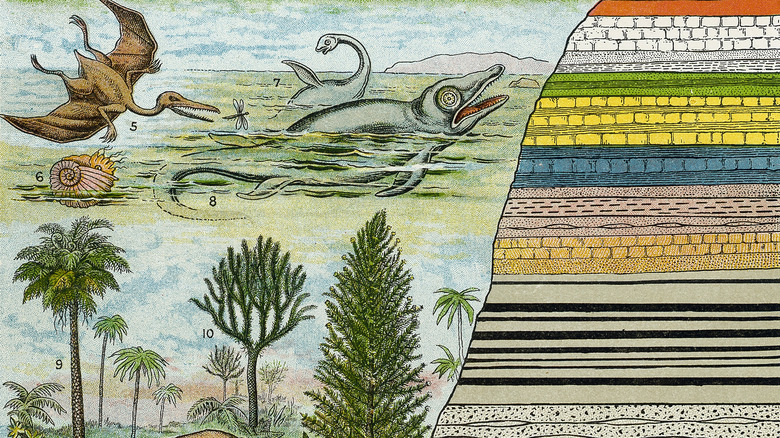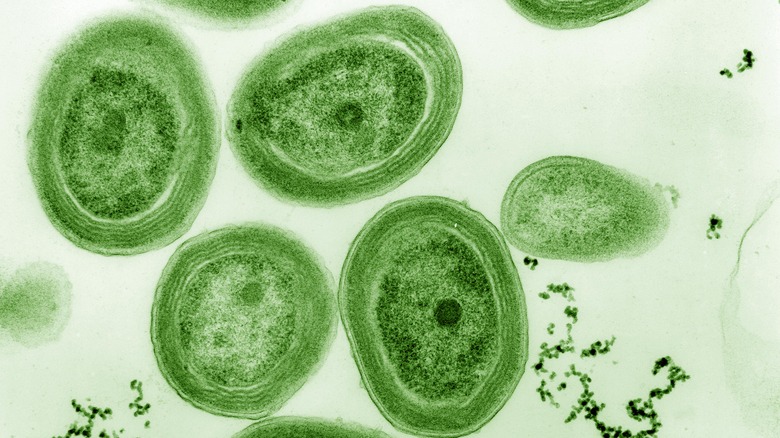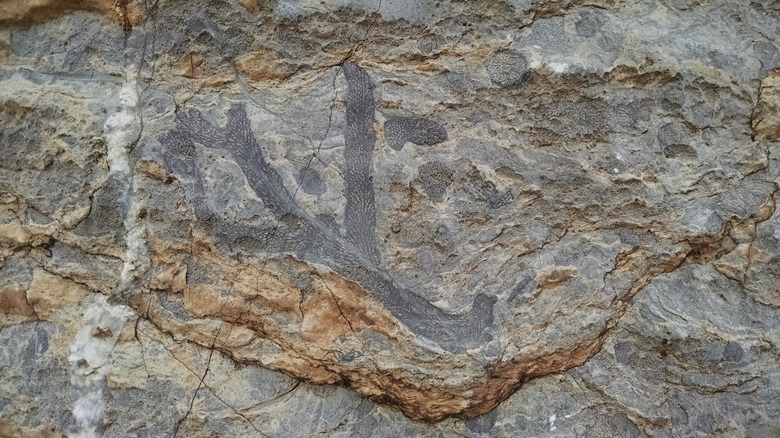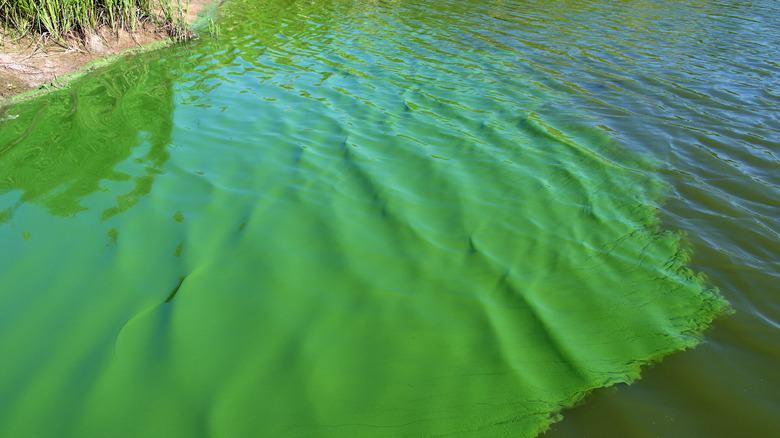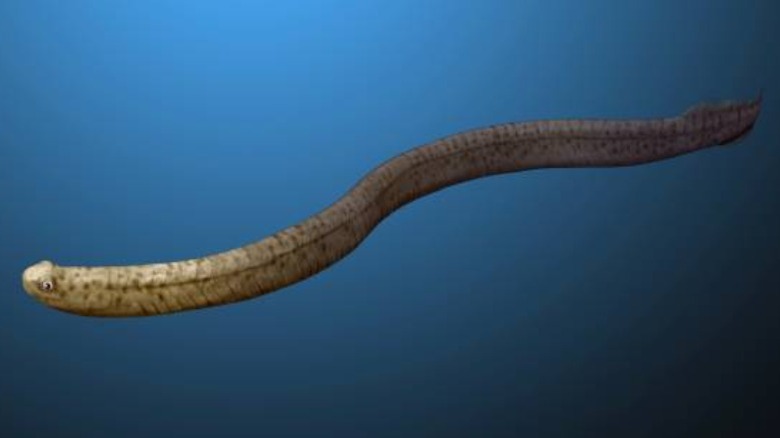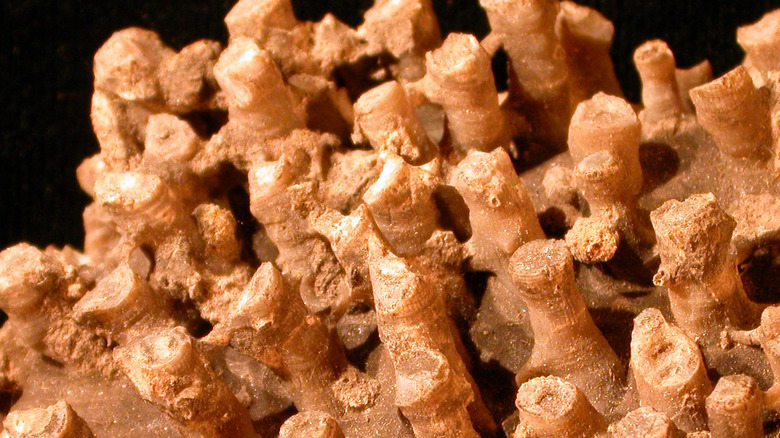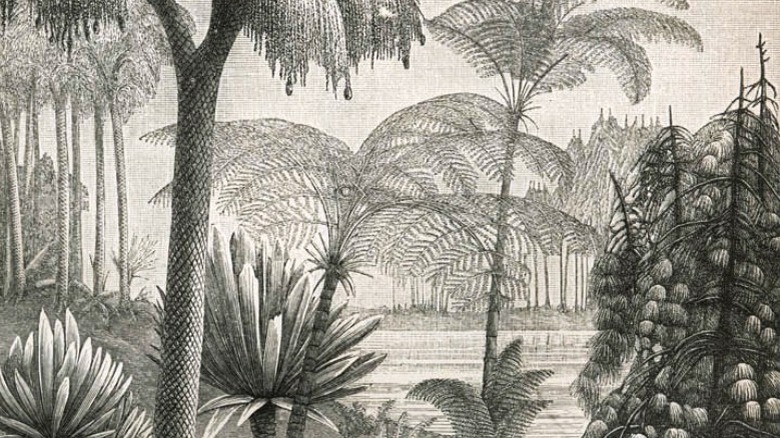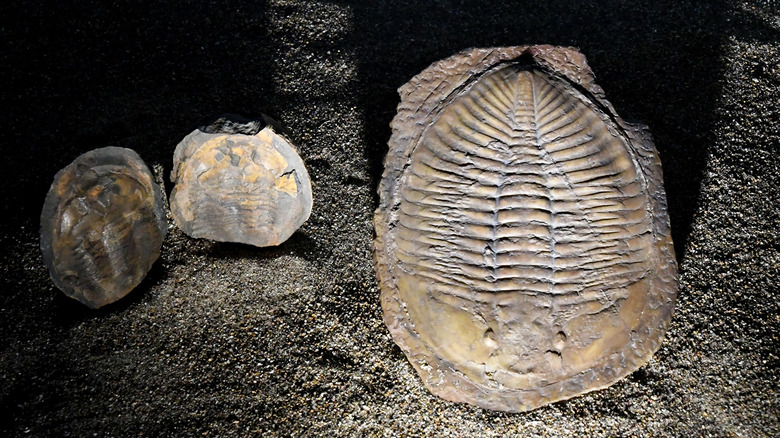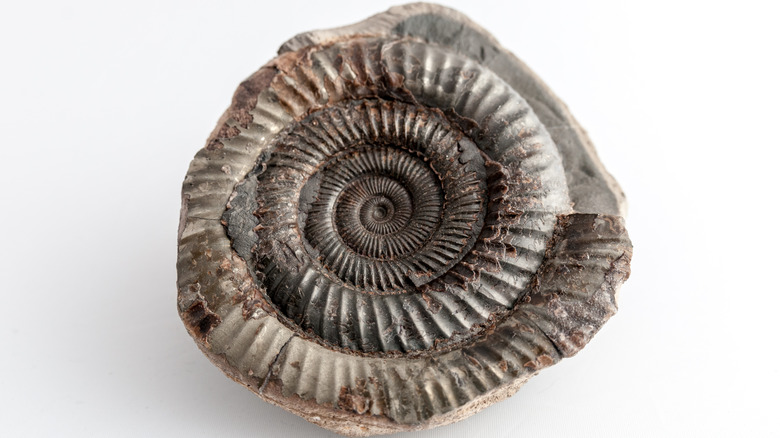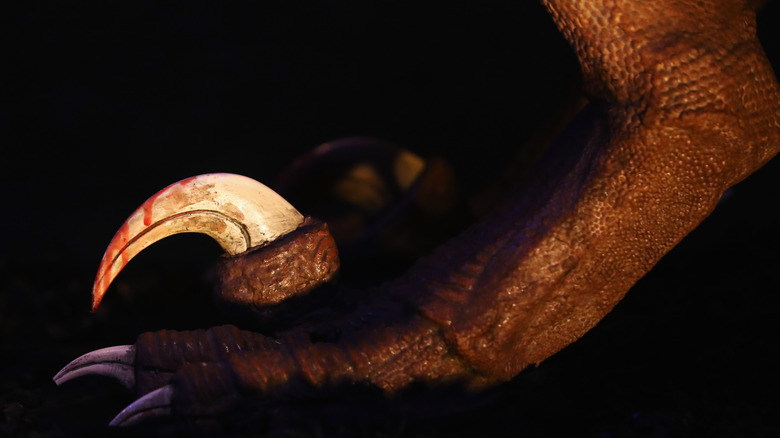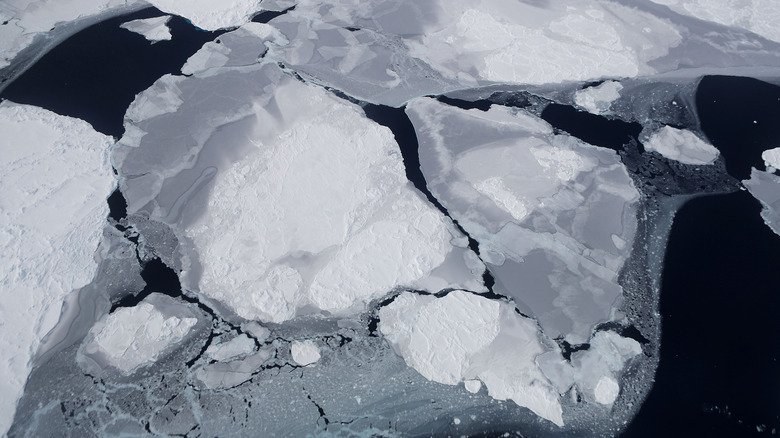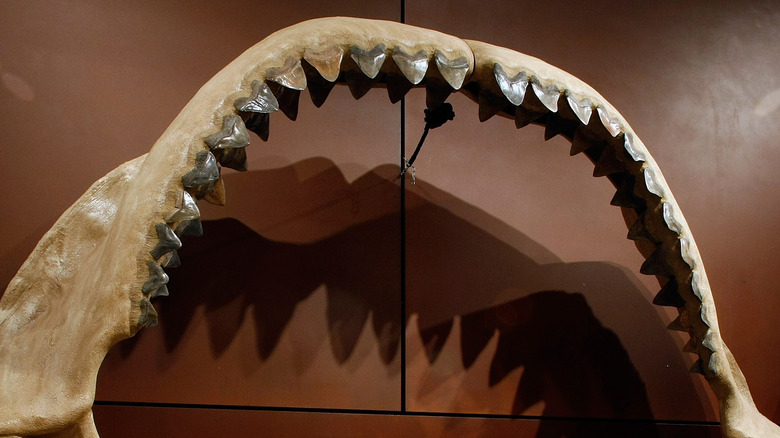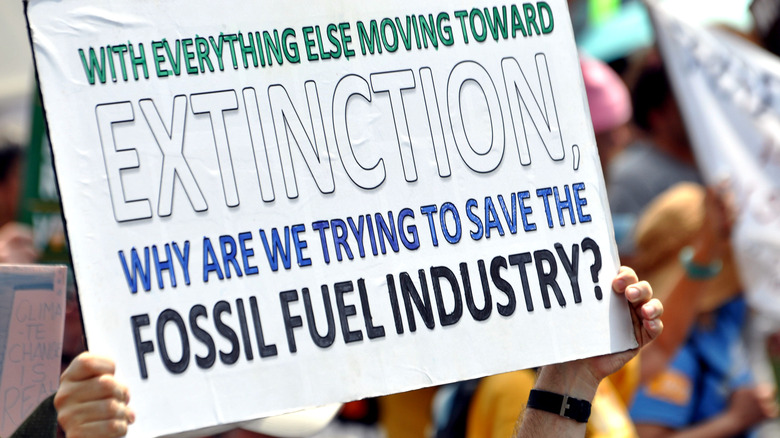Every Mass Extinction Event Explained
The planet Earth has seen its fair share of extinction events. It's estimated that out of the 4 billion species that have ever evolved on the planet, maybe about 1% remain today, if that. But even the estimation of 4 billion might be too conservative. Because fossilization is such a specific and rare process, "less than one-10th of 1%" of all species that have ever existed end up becoming a fossil.
Jellyfish fossils, for example, are incredibly rare because they have no hard parts to fossilize, and our earliest estimate for their origins is 500 million years ago only because we found a fossil from that period. But it's entirely possible that jellyfish and their ancestors were floating around the oceans even earlier, we just don't have the fossils to prove it for certain.
Using the fossils that we do have, scientists are able to study the origins and the evolutionary timelines for various creatures. And while extinction is a natural part of the evolutionary process, mass extinction events are notable for their reduction of biodiversity and are known to have a variety of causes. This is every mass extinction event explained.
The Oxygen Catastrophe
Although humans consider oxygen to be an essential part of life, its introduction was actually responsible for what can be considered the first mass extinction in Earth's history. Known as the Great Oxidation Event (GOE), or the Oxygen Catastrophe, one simple element changed the course of our planet.
Approximately 3 billion years ago, the Earth's atmosphere had 0.03% of today's oxygen levels, per The New York Times. But after roughly half a billion years, oxygen "took up residence in the atmosphere." One of the leading theories posits that as cyanobacteria, one of Earth's earliest prokaryotic organisms, evolved the ability to photosynthesize and as they started giving off oxygen as waste, the oxygen levels began to slowly rise. However, Nature notes that one of the limitations with this theory is its presupposition that "cyanobacteria were abundant prior to the GOE."
But although the cause is relatively unknown, there's agreement on the fact that there was a significant change in the oxygen levels of the Earth. And although scientists initially believed that the GOE led to an increase in life, evidence suggests there was a decrease that "eclipses even the largest extinction events in all of Earth's history," per PNAS. This is thought to be due to the increase in oxygen, which was toxic, as well as a famine due to a change in nutrients. Unfortunately, according to Palaeontology, "the overall fossil record is patchy at best and provides only glimpses into the history of these early prokaryotes."
50% gone
During the final stages of the Cambrian Period, which lasted from 541 million years ago to 485 million years ago, the Earth witnessed two extinction events known as the end-Botomian mass extinction event. The Cambrian Period is considered significant in Earth's biological history because of the transition from unicellular organisms to multicellular organisms, including hard-shelled animals like trilobites.
But then, around 510 million years ago, it's estimated that 83% of all hard-shelled genera around the world went extinct, New Scientist reports. After the mass extinction event, the global diversity is believed to have dropped "to just 35% of what it was in the Botomian." Creatures like trilobites and archaeocyathids were "severely affected" and even conservative estimates believe that extinction event eliminated "more than 50% of the genera extant at the time," according to "Biotic Recovery from Mass Extinction Events," edited by M.B. Hart.
For some scientists, the end-Botomian mass extinction event is considered to be even more severe than the extinction at the end of the Permian period, roughly 250 years later. But others claim that since the background rate of extinction during the Cambrian is believed to be higher, the Permian extinction should be considered more severe. However, scientists still aren't entirely sure what caused the end-Botomian mass extinction event. According to the University of Leeds, there are several theories, including volcanism, "sea-level change, marine anoxia, carbon isotope excursions, and eruptions of LIPs (large igneous provinces)."
Pulses of extinction
The Late Ordovician mass extinction describes two extinction events during the Hirnantian, the last stage of the Ordovician Period roughly 444 million years ago, and is considered to be one of the largest major extinction events in Earth's biological history. Over the course of "two pulses of extinction," 85% of all marine species went extinct. During the Late Ordovician mass extinction, 85% of all species, 60% of all genera, and 25% of all families were wiped out. Creatures like trilobites "disappeared almost completely," as did graptolites, bryozoans, brachiopods, and conodonts, writes Discover Magazine.
According to The Geological Society of America, the first "pulse of extinction" is believed to be linked to "cooling and Gondwanan glaciation," during which it's believed that "glacioeustatic sea-level fall and tropical ocean cooling" played an important role. The second pulse is believed to have occurred as the "climate moderated, and oceanic circulation stagnated," per the Annual Review of Earth and Planetary Sciences. Most theories attribute the second pulse to "warming and anoxia" and mercury deposits also seem to point to increased eruptions and volcanism during this second pulse.
But ultimately, National Geographic writes that there's not enough evidence to support one conclusion over another. And new theories continue to arise, such as the theory that changes in the ocean's chemistry cause planktonic creatures to turn into "monstrosities."
Disappearing from the oceans
Roughly 420 million years ago, the Lau event, also known as the Lau/Kozlowskii extinction, became the last of three extinction events to occur during the Silurian period, following the Ireviken and the Mulde. However, unlike other mass extinctions, which can be "tidily linked" to things like volcanic eruptions, the Lau extinction is less easily explained.
According to Science Daily, 23% of all marine animals went extinct during the Lau extinction, affecting condonts, graptolites, trilobites, and radiolarians. And the extinction rate for graptolite was as high as 70%, per Bollettino della Società Paleontologica Italiana. Interestingly, shallow water reefs were "barely affected." Scientists believe that this is because the Lau extinction was caused by ocean deoxygenation that started among deep-water organisms. It's also believed that the "proliferation of sulfidic ocean conditions" also played a role.
The widespread death and "burial of enormous amounts of organic matter" is also believed to have subsequently led to a disruption in the carbon cycle, causing "significant climate and environmental changes." However, because the carbon cycle disruption occurs more than 100,000 years after the Lau extinction, it's been difficult to prove if there really is a link between them.
The Devonian disappearance
Although scientists agree that the Late Devonian mass extinctions wiped out countless different creatures, there's considerable debate as to how long the extinction period actually lasted. The Devonian Period itself lasted from 419 million years ago to 358 million years ago, and the mass extensions are thought to have lasted between 2-4 million years to 20-25 million years.
According to The Devonian Times, over the course of 8 to 10 extinction events during the Late Devonian mass extinctions, "20% of all animal families and 70-80% of all animal species" went extinct. Ammonites, tabulate corals, jawless fishes, and stromatoporoid sponges were among some of those affected, and some creatures like tabulate corals "never truly recovered," leading to immense changes in reef ecology. Corals in general were so badly affected that it took them nearly 120 years to recover, writes the American Museum of Natural History.
A further 16% of all marine families went extinct during the final phase of the Late Devonian mass extinctions. But PBS notes that terrestrial flora and fauna "escape[d] largely untouched." Discover Magazine writes that scientists believe that most of the extinctions during the Late Devonian mass extinctions were caused by widespread low-oxygen levels in the ocean, but they're still not sure exactly why there was such low oxygen during that period.
There goes the greenery
While the history of mass extinctions often focuses on the fauna that disappears, flora have also suffered from their own mass extinctions. Known as the Carboniferous rainforest collapse, the mass extinction of plant species roughly 307 million years ago is believed to have completely altered the landscape and ecology of Earth.
According to The Conversation, roughly 310 million years ago the landmasses of Pangaea and Cathaysia were covered with vegetation akin to tropical rainforest. These forests are known as "coal forests" because the coal that humans would eventually come to use comes from the vegetation of this era. Discover Magazine notes that even the word "Carboniferous" literally means "coal-bearing" in Latin. The vegetation during the Carboniferous period initially thrived because of the humidity, but as the Earth's climate became drier and drier, many species such as horsetails and club mosses went extinct. But the overall extent of the mass extinction remains unknown.
Scientists are also trying to figure out if the mass extinction of flora had any effect on the contemporary fauna. Science Daily writes that evidence points to a wider dispersal of tetrapod species, including early amniotes. Some research also shows that species diversification may have been triggered by the Carboniferous collapse.
Extinction for the masses
The Permian–Triassic extinction event, commonly referred to as the P–T event, is considered to be the most severe extinction event in Earth's biological history. Also known as the Great Dying, many scientists consider the severity of the P–T event to be unmatched by any other mass extinction event. And unlike other mass extinction events, there's no evidence that the extinction event was preceded by atmospheric, oceanic changes, or species deaths, which is why scientists describe the P–T event as being "geologically instantaneous."
Taking place roughly 251.9 million years ago, between 77-96% of all invertebrate marine species and 54% of invertebrate marine families went extinct during the P–T event, per "Paradise for Sale" by Carl N. McDaniel and John M. Gowdy. On land, 70% of all land vertebrate species went extinct, as did an innumerable amount of insect species, writes Science Journal. Even the trilobite class, which had managed to recover after several mass extinctions, was forced to say its final farewell.
The P–T event is believed to have been caused by a combination of atmospheric change, asteroid impacts, and volcanic activity. And although biological life was able to recover, by some estimates it took as long as 10 million years.
One after another
After the devastation of the P–T event, biological life only had around 50 million years before another mass extinction event hit it. The Triassic–Jurassic extinction event, also known as the end-Triassic extinction, occurred roughly 201 million years ago and has been described as "equivalent in scale to the Late Ordovician, Late Devonian, and end-Cretaceous events," according to Historical Biology.
It's estimated that up to 34% of marine genera went extinct, with some estimating up to 20% of marine families. Creatures like the conodonts class, which had survived alongside the trilobites through several extinctions, also disappeared for good during the Triassic–Jurassic extinction event. Triassic ceratitid ammonoids also became extinct, but phylloceratid ammonoids managed to survive the mass extinction event, writes "The Mesozoic Era," edited by John P. Rafferty.
Land vertebrates also didn't come out of the Triassic–Jurassic extinction event unscathed. Creatures such as "aetosaurs, some of the cynodonts and all of the dicynodonts," as well as phytosaurs and rauisuchians, went extinct as well, according to the Journal of Palaeogeography. MIT News writes that although scientists aren't sure exactly what caused the Triassic–Jurassic extinction event, most seem to believe that it was due to the acidification of the ocean and atmospheric changes, caused by an increase in volcanic activity.
One asteroid is all it takes
The Cretaceous–Paleogene extinction event, formerly referred to as the K–T extinction, may be the most well-known extinction event in Earth's history. The Cretaceous–Paleogene extinction refers to the asteroid impact that occurred roughly 65 million years ago, resulting in the loss of most life on Earth, including the dinosaurs.
It's estimated that 75% of all living species on Earth went extinct as a result of the Cretaceous–Paleogene extinction. According to Columbia University, this breaks down to 15% of all marine families, 50% of all marine genera, 25% of all land families, and 56% of all land genera. And although the dinosaurs are the most popular casualty, other creatures like the Hesperornithes were also lost to the fossil record.
Phys.org writes that the asteroid hit the Earth at the tip of the Yucatán Peninsula in Mexico, causing a period of cold and darkness, known as an "impact winter," due to the massive amounts of soot in the atmosphere. This caused not only a fall in temperature but also "kill[ed] off photosynthesizers at the base of the food web for well over a year."Ultimately, nothing larger than 55 pounds was able to survive. But ThoughtCo. writes that the extinction of large land animals, like the dinosaurs, allowed for the smaller animals, including mammals, to flourish.
A chilling end
Roughly 34 million years ago, as the Eocene epoch drew to a close, the Earth's climate shifted and began to cool, hitting biological life with another mass extinction known as the Eocene–Oligocene extinction event. As temperatures fell drastically, forests turned into grasslands, sea levels dropped, and the ice sheets expanded with the appearance of the first Antarctic ice sheets, according to the Annual Review Of Earth And Planetary Sciences.
It's estimated that in Europe and Asia, nearly 66% of all known species went extinct. And in Africa and the Arabian Peninsula, Duke News writes that 63% of mammalian species alone went extinct as well. For some creatures, the Eocene–Oligocene extinction event was even more devastating. Only 10% of mollusk species in the U.S. Gulf coastal plain survived into the Oligocene. However, in places like South East Asia, the fossil record seems to show instead an increase in diversity, suggesting that the region was "a refugium during the E–O boundary for taxa restricted to tropical ecosystems."
Annals of Botany writes that the cooling of Earth's climate is believed to have been caused by changes in ocean circulation, due to a shift in the tectonic plates, a drop in atmospheric carbon dioxide, and a "decrease in solar insulation."
Goodbye to the giants
Up until 3 or 4 million years ago, there was always the potential that a giant marine fauna like the megalodon might be lurking in the water. But after the Pliocene–Pleistocene boundary extinction, roughly 2.6 million years ago, such megafauna disappeared from the world's oceans. But scientists still aren't sure exactly why.
It's estimated that 36% of marine genera became extinct, according to Phys.org, so it's unlikely that the megalodon was part of the background rate of extinction. Some scientists have theorized that a supernova, causing a spike in iron-60, "caused penetrating particles called muons to shower Earth, causing cancers and mutations—especially to larger animals." Other scientists have looked into causes like sea level changes and reductions of coastal habitats, prior research showed that because "temperature changes were not a major determinant" for the megalodon, writes Nature.
Megaherbivores on the African continent are also believed to have started to decline during the Pliocene–Pleistocene boundary extinction. However, Science Journal writes that this is believed to have been caused by "declining atmospheric carbon dioxide and expansion of grasslands."
Human error
The majority of scientists agree that the Earth is currently going through a mass extinction event, but there's some disagreement over the consequences of such an event and whether or not it's of cause for concern. Referred to as the Holocene extinction, the Anthropocene extinction, this extinction is differentiated from other mass extinction events due to the fact that it is caused by human activity rather than having an environmental or celestial cause.
However, Science Magazine writes that studies and estimates regarding the current extinction rate compared to the background rate of extinction show that this mass extinction event may be even more different than previously thought. It's estimated that the rate of species extinction is between 100 to 1,000 times that of the background rate of extinction. According to Conservation Biology, it's possible that this number could even rise to being 10,000 times higher. In comparison, the Permian–Triassic extinction event was 10 times the background rate and the end-Botomian extinction event was twice the background rate.
"For example, 477 vertebrates have gone extinct since 1900, rather than the nine that would be expected at natural rates," per The Guardian. Another study showed that "70% of all individuals of vertebrate species have disappeared over the 50 years since 1970," per PNAS. And ultimately, according to Nigel Stork, there may be a bigger issue: "by concentrating on global biodiversity, we may be missing a bigger and more immediate threat — the loss of local biodiversity."
